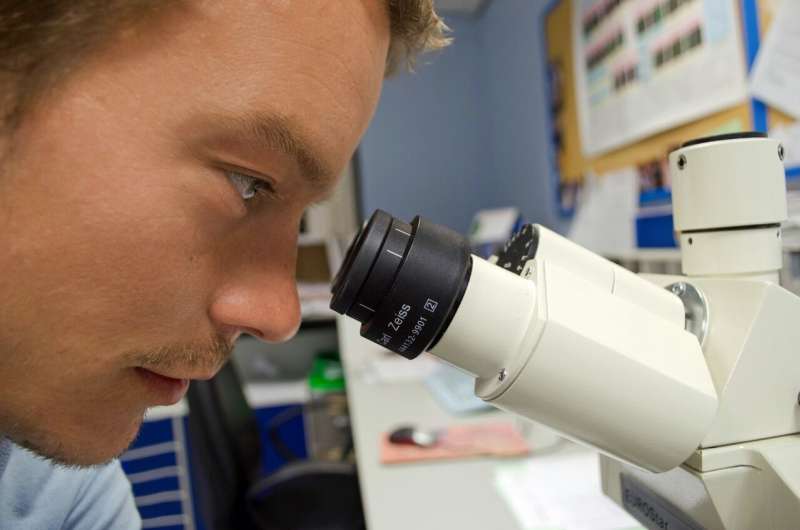This article has been reviewed according to Science X's editorial process and policies. Editors have highlighted the following attributes while ensuring the content's credibility:
fact-checked
peer-reviewed publication
trusted source
proofread
Study reveals young scientists face career hurdles in interdisciplinary research

Scientists agree that solving some of society's greatest challenges in biomedicine, such as food sustainability, aging and disease treatment, will need researchers from a variety of scientific fields working together.
But a new study finds that the young scientists who most embrace interdisciplinary research face "career impediments" not seen in their peers who focus their work only within their own disciplines.
The results are troublesome and pose a "grave challenge" to efforts to increase interdisciplinary research, the authors of the study write.
"As an economist, you would think that the most interdisciplinary young researchers would get the most rewards, because that is the type of research that is seen as most valuable. But that doesn't appear to be the case," said Bruce Weinberg, co-author of the study and professor of economics at The Ohio State University.
The study was published in the journal Proceedings of the National Academy of Sciences.
Interdisciplinary research in biomedicine involves integrating knowledge from different subfields of biology, and brings in expertise from other disciplines, including physics, chemistry, computer science, engineering and social science.
For example, one recent study on how people's thoughts can harm their neck and back during lifting tasks included researchers from engineering, anesthesiology and orthopedics.
In this new study, Weinberg and his colleagues analyzed data on 154,021 researchers who received a Ph.D. in a biomedical field between 1970 and 2013. A second sample included data on more than 2.6 million research papers published between 1970 and 2018.
One goal was to compare the careers of researchers who focused on interdisciplinary research while they were graduate students and early in their careers with those who mostly stuck to research within their discipline.
Researchers who were initially the most interdisciplinary tended to stop publishing new research earlier in their careers. While half of the most interdisciplinary researchers (top 1%) stopped publishing by the eighth year of their careers, it took more than 20 years for moderately interdisciplinary researchers (in the 10–75% range) to do the same.
Perhaps in response to career pressures, initially interdisciplinary researchers on average decreased their research that spanned different fields over time, findings showed.
This study can't say why these concerning trends are happening, Weinberg said. Universities know the importance of interdisciplinarity and indeed encourage it in many ways, including creating centers that revolve around research in many disciplines. But long-standing academic structures that are built around individual disciplines may hold back early-career researchers with more wide-ranging interests, he said.
It is an issue that is solvable and that universities are interested in fixing, he said. It is a matter of redesigning systems that have been in place for many years.
Still, there were some encouraging findings in this study.
"We found that interdisciplinarity does increase over time despite these challenges," Weinberg said.
"It turns out that researchers who were originally focused mostly on research just in their disciplines do become more interdisciplinary as their careers progress."
It may be that once researchers' careers are established, they have the freedom to explore other fields and begin to work more outside their discipline.
"But we are missing an opportunity by not encouraging the bright young minds who are already interested in working with scientists in other fields to solve society's most difficult problems," Weinberg said.
"We need to provide more incentives for these young researchers."
Co-authors on the study were Enrico Berkes, a former postdoctoral researcher at Ohio State, now an assistant professor of economics at the University of Maryland, Baltimore County; and Monica Marion and Stasa Miljevic of Indiana University.
More information: Weinberg, Bruce A., Slow convergence: Career impediments to interdisciplinary biomedical research, Proceedings of the National Academy of Sciences (2024). DOI: 10.1073/pnas.2402646121
Journal information: Proceedings of the National Academy of Sciences
Provided by The Ohio State University





















